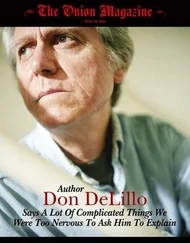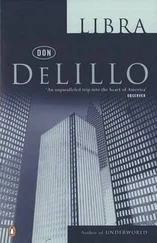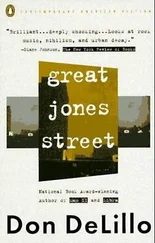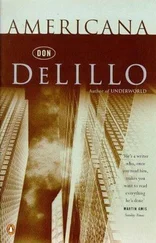“The old jalop needs a tune-up,” Gracie said. “Hear that noise?”
“Ask Ismael to take a look.”
“Ku-ku-ku-ku.”
“He’s the expert.”
“I can do it myself. I just need the right tools.”
“I don’t hear anything,” Edgar said.
“Ku-ku-ku-ku? You don’t hear that?”
“Maybe I’m going deaf.”
“I’ll go deaf before you do, Sister.”
“Look, another angel on the wall.”
The two women looked across a landscape of vacant lots filled with years of stratified deposits — the age-of-house garbage, the age-of-construction debris and vandalized car bodies. Many ages layered in waste. This area was called the Bird in jocular police parlance, short for bird sanctuary, a term that referred in this case to a tuck of land sitting adrift from the social order. Weeds and trees grew amid the dumped objects. There were dog packs, sightings of hawks and owls. City workers came periodically to excavate the site, the hoods of their sweatshirts fitted snug under their hard hats, and they stood warily by the great earth machines, the pumpkin-mudded backhoes and dozers, like infantrymen huddled near advancing tanks. But soon they left, they always left with holes half dug, pieces of equipment discarded, styrofoam cups, pepperoni pizzas. The nuns looked across all this. There were networks of vermin, craters chocked with plumbing fixtures and sheetrock. There were hillocks of slashed tires laced with thriving vine. Gunfire sang at sunset off the low walls of demolished buildings. The nuns sat in the van and looked. At the far end was a lone standing structure, a derelict tenement with an exposed wall where another building had once abutted. This wall was where Ismael Muñoz and his crew of graffiti writers spray-painted a memorial angel every time a child died in the neighborhood. Angels in blue and pink covered roughly half the high slab. The child’s name and age were printed in cartoon bubbles under each angel, sometimes with cause of death or personal comments by the family, and as the van drew closer Edgar could see entries for TB, AIDS, beatings, drive-by shootings, blood disorders, measles, general neglect and abandonment at birth — left in dumpster, forgot in car, left in Glad bag Xmas Eve.
“I wish they’d stop already with the angels,” Gracie said. “It’s in totally bad taste. A fourteenth-century church, that’s where you go for angels. This wall publicizes all the things we’re working to change. Ismael should look for positive things to emphasize. The townhouses, the community gardens that people plant. The townhouses are nice, they’re clean. Walk around the corner, you see ordinary people going to work, going to school. Stores and churches.”
“Titanic Power Baptist Church.”
“It’s a church, it’s a church, what’s the difference? The area’s full of churches. Decent working people. Ismael wants to do a wall, these are the people he should celebrate. Be positive.”
Edgar laughed inside her skull. It was the drama of the angels that made her feel she belonged here. It was the terrible death these angels represented. It was the danger the writers faced to produce their graffiti. There were no fire escapes or windows on the memorial wall and the writers had to rappel from the roof with belayed ropes or sway on makeshift scaffolds when they did an angel in the lower ranks. Ismael spoke of a companion wall for dead graffitists, flashing his wasted smile.
“And he does pink for girls and blue for boys. That really sets my teeth on edge.”
“There are other colors,” Edgar said.
“Sure, the streamers that the angels hold aloft. Big ribbons in the sky. Makes me want to be sick in the street.”
They stopped at the friary to pick up food they would distribute to the needy. The friary was an old brick building wedged between boarded tenements. Three monks in gray cloaks and rope belts worked in an anteroom, getting the day’s shipment ready. Grace, Edgar and Brother Mike carried the plastic bags out to the van. Mike was an ex-fireman with a Brillo beard and wispy ponytail. He looked like two different guys front and back. When the nuns first appeared he’d offered to serve as guide, a protecting presence, but Edgar had firmly declined. She believed her habit and veil were safety enough. Beyond these South Bronx streets, people might look at her and think she existed outside history and chronology. But inside the strew of rubble she was a natural sight, she and the robed monks. What figures could be so timely, costumed for rats and plague?
Edgar liked seeing the monks in the street. They visited the homebound, ran a shelter for the homeless; they collected food for the hungry. And they were men in a place where few men remained. Teenage boys in clusters, armed drug dealers — these were the men of the immediate streets. She didn’t know where the others had gone, the fathers, living with second or third families, hidden in rooming houses or sleeping under highways in refrigerator boxes, buried in the potter’s field on Hart Island.
“I’m counting plant species,” Brother Mike said. “I’ve got a book I take out to the lots.”
Gracie said, “You stay on the fringes, right?”
“They know me in the lots.”
“Who knows you? The dogs know you? There are rabid dogs, Mike.”
“I’m a Franciscan, okay? Birds light on my index finger.”
“Stay on the fringes,” Gracie told him.
“There’s a girl I keep seeing, maybe twelve years old, runs away when I try to talk to her. I get the feeling she’s living in the ruins. Ask around.”
“Will do,” Gracie said.
When the van was loaded they drove back to the Bird to do their business with Ismael and to pick up a few of his crew who would help them distribute the food. What was their business with Ismael? They gave him lists that detailed the locations of abandoned cars in the North Bronx, particularly along the Bronx River, which was a major dump site for stolen joyridden semistripped gas-siphoned pariah-dog vehicles. Ismael sent his crew to collect the car bodies and whatever parts might remain unrelinquished. They used a small flatbed truck with an undependable winch and a motif of souls-in-hell graffiti on the cab, deck and mudflaps. The car hulks came here to the lots for inspection and price-setting by Ismael and were then delivered to a scrap-metal operation in remotest Brooklyn. Sometimes there were forty or fifty cannibalized car bodies dumped in the lots, museumquality — bashed and rusted, hoodless, doorless, windows deep-streaked like starry nights in the mountains.
When the van approached the building, Edgar felt along her midsection for the latex gloves she kept tucked in her belt.
Ismael had teams of car spotters who ranged across the boroughs, concentrating on the bleak streets under bridges and viaducts. Charred cars, upside-down cars, cars with dead bodies wrapped in shower curtains all available for salvage inside the city limits. The money he paid the nuns for their locational work went to the friary for groceries.
Gracie parked the van, the only operating vehicle in human sight. She attached the vinyl-coated steel collar to the steering wheel, fitting the rod into the lock housing. At the same time Edgar force-fitted the latex gloves onto her hands, feeling the secret reassurance of synthetic things, adhesive rubberized plastic, a shield against organic menace, the spurt of blood or pus and the viral entities hidden within, submicroscopic parasites in their protein coats.
Squatters occupied a number of floors. Edgar didn’t need to see them to know who they were. They were a civilization of indigents subsisting without heat, lights or water. They were nuclear families with toys and pets, junkies who roamed at night in dead men’s Reeboks. She knew who they were through assimilation, through the ingestion of messages that riddled the streets. They were foragers and gatherers, can-redeemers, the people who yawed through subway cars with paper cups. And doxies sunning on the roof in clement weather and men with warrants outstanding for reckless endangerment and depraved indifference and other offenses requiring the rounded Victorian locutions that modern courts have adopted to match the woodwork. And shouters of the Spirit, she knew this for a fact — a band of charismatics who leaped and wept on the top floor, uttering words and nonwords, treating knife wounds with prayer.
Читать дальше











